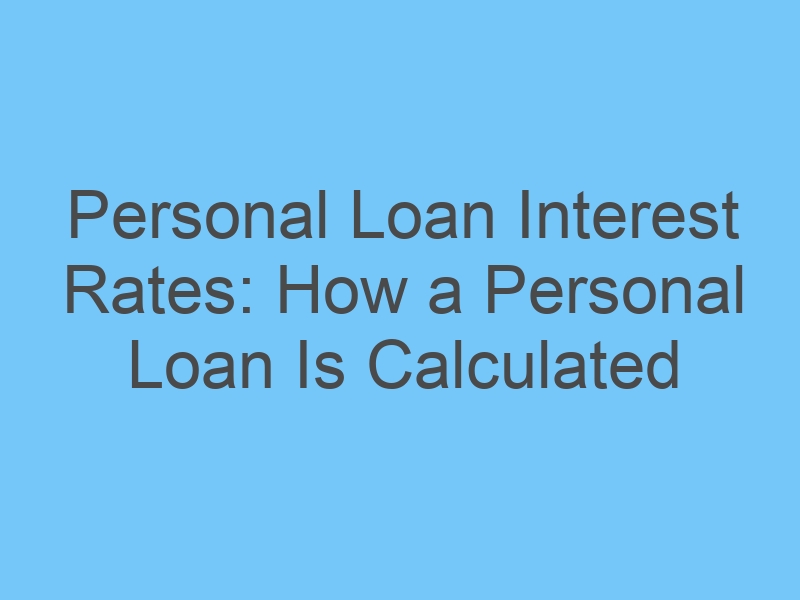
Personal Loan Interest Rates: How a Personal Loan Is Calculated
Personal loan interest rates are determined by various factors and can vary depending on the lender, your creditworthiness, and prevailing market conditions. Understanding how personal loan interest rates are calculated can help you make informed decisions when considering borrowing. Here’s how personal loan interest rates are typically calculated:
- Credit Score: Your credit score is a significant factor in determining the interest rate you’ll be offered. Lenders use your credit score to assess your creditworthiness and risk level. A higher credit score often leads to a lower interest rate, as it indicates a lower risk of default.
- Loan Amount: The loan amount you’re requesting can influence the interest rate. Larger loan amounts might result in higher interest rates since they represent a higher lending risk for the lender.
- Loan Term: The loan term, or repayment period, is the length of time over which you’ll be repaying the loan. Generally, shorter loan terms may have lower interest rates compared to longer terms.
- Type of Loan: Different types of personal loans (secured vs. unsecured) and loan purposes (debt consolidation, home improvement, medical expenses, etc.) can impact the interest rate. Secured loans, backed by collateral, might have lower rates than unsecured loans.
- Market Conditions: Overall economic conditions and prevailing interest rates in the market can influence personal loan rates. Lenders adjust their rates based on changes in the broader financial environment.
- Lender Policies: Each lender has its own underwriting criteria and risk assessment process. Lenders might consider factors beyond your credit score, such as your income, employment history, debt-to-income ratio, and existing financial obligations.
- Fixed vs. Variable Rates: Personal loans can have fixed or variable interest rates. Fixed rates remain constant throughout the loan term, providing predictable payments. Variable rates can change over time based on changes in market interest rates.
- Discounts and Incentives: Some lenders offer interest rate discounts for specific conditions, such as setting up automatic payments or having an existing relationship with the bank.
- Loan Marketplaces: Loan marketplaces and online platforms may allow you to compare offers from multiple lenders. This can help you find the most competitive interest rate for your credit profile.
To calculate the actual interest cost of a personal loan, use the following formula:
Interest Cost = (Loan Amount) × (Interest Rate) × (Loan Term in Years)
Keep in mind that the total cost of the loan includes both the principal (loan amount) and the interest payments. When comparing loan offers, consider the Annual Percentage Rate (APR), which takes into account not only the interest rate but also any fees and charges associated with the loan.
Before taking out a personal loan, shop around, compare offers from different lenders, and consider how the interest rate, loan terms, and overall cost align with your financial goals and repayment ability.

Dr Clara Lee is specializes in aesthetic/cosmetic plastic surgery of the face, nose, breast and body, and is considered one of the best facial plastic surgeons in the world. MD, FACS, is highly qualified and experienced in the field of plastic surgery and aesthetic care and has performed over 10,000 surgical procedures.
About
Dr. Clara Lee couples his outstanding professional credentials and ethics with a personalized approach to patient care and a keen eye for aesthetic beauty.
Specialties: plastic surgeon, plastic surgery
by Clara Lee
Reviewed by Clara Lee
approved by Dr Clara Lee
Leave a Reply